Risk markets seem to have concluded that the Trump Tariff Tax Trade Tiff is nearly over, and everything will go back to being normal, even though almost all the macroeconomic indicators suggest otherwise as the US economy slows down as stagflation rears its ugly head. The Trump regime ability to goose the stock market back to its previous position with one of the best ever dump and pump schemes may not be as adept at the fallout with Moody’s actually downgrading US sovereign debt on Friday while the horizon for more trade deals to upend other reciprocal tariffs looks nearly empty.
The USD was mixed against the majors on Friday night but we could see some selling on the open this morning in reaction to the Moody’s downgrade with most undollars holding somewhat firm against King Dollar with the Australian dollar still above the 64 cent level.
10 year Treasury yields were down slightly at the 4.4% level while oil prices remain somewhat weak despite recent rallies with Brent crude pushed back to the $65USD per barrel level. Meanwhile gold is failing to recover as it drops more than $40 to almost cross below the $3200USD per ounce level.
Looking at stock markets from Asia from Friday’s session, where mainland and offshore Chinese share markets pulled back with the Shanghai Composite closing 0.4% lower while the Hang Seng Index lost nearly 0.5% to close at 23345 points.
The daily chart shows a near complete fill of the March/April selloff but momentum is slowly down as the 90 day “relief” continues without any further positive news:
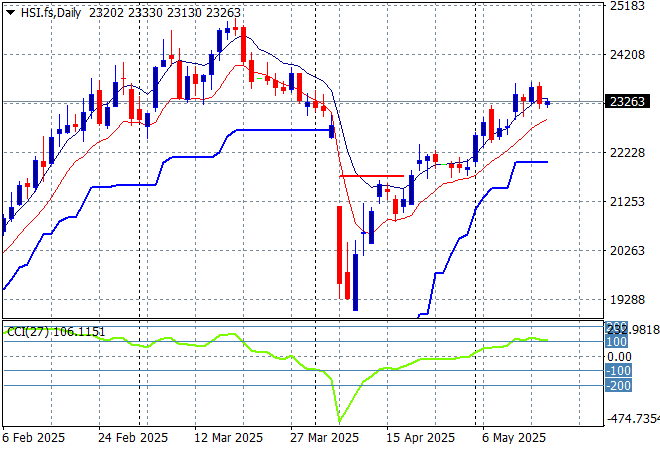
Japanese stock markets put in scratch sessions with the Nikkei 225 finishing dead flat at 37753 points.
Daily price action is looking very keen indeed although daily momentum has slowed down somewhat, it has cleared resistance at the 36000 point level with another equity market that looks stretched:
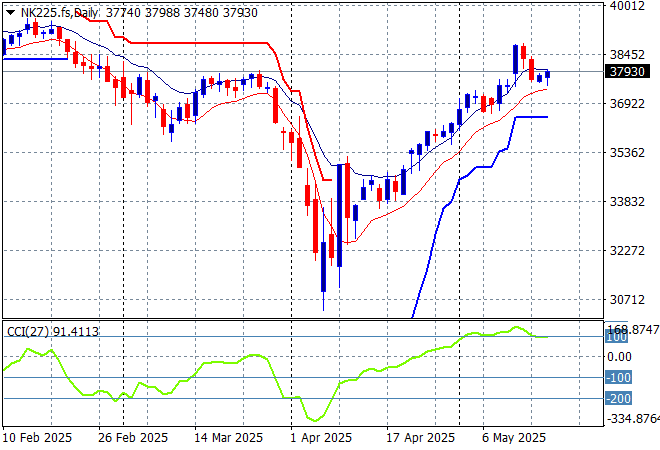
Australian stocks managed a much better session with the ASX200 closing more than 0.5% higher at 8343 points.
SPI futures are somewhat flat with the potential for a volatile open given the Moody’s downgrade from late Friday despite the strong session on Wall Street. The daily chart pattern suggests further upside is still possible however as the inverted head and shoulders pattern is nearly complete with all eyes on the next RBA cut:
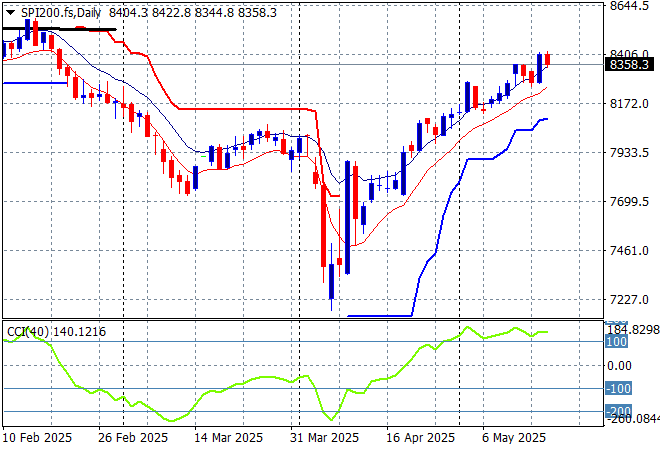
European markets had fairly robust sessions across the continent with the Eurostoxx 50 Index finishing 0.3% higher at 5427 points.
Support at the previous monthly support levels (black line) at 5100 points is now firmly held with the bounce off the 2024 lows at the 4400 point level indicating a massive fill of this dump and pump action with the former February highs now in sight:
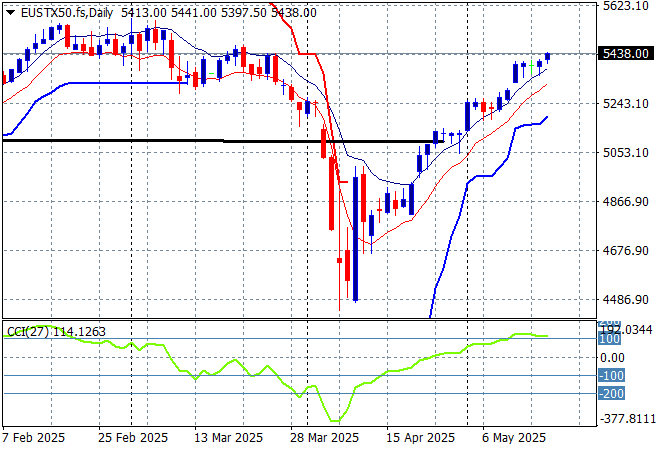
Wall Street however was able to rally somewhat in the physical session with the NASDAQ gaining more than 10.5% while the S&P500 pushed 0.7% higher to almost get back above the 6000 point level, closing at 5958 points.
Everything is awesome according to the daily chart as prices gets back above the pre-Trump Tariff Tax day and are now barrelling in on the former highs as hopium spreads that there will be zero impact to earnings:
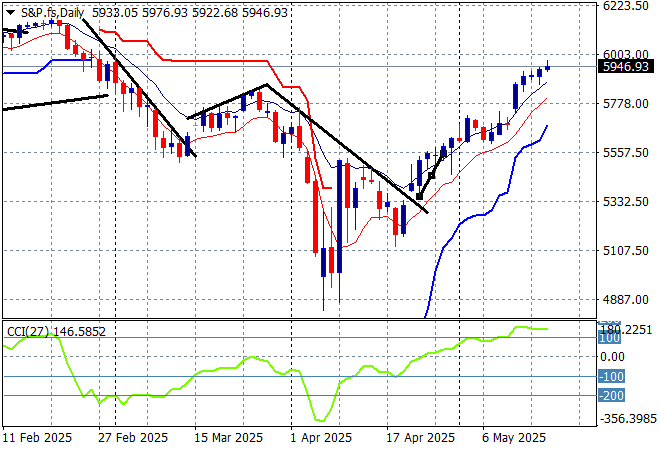
Currency markets are still trying to understand fact from fiction with the USD still quite mixed against the majors although Euro dropped on Friday night despite calls from the ECB that its cuts may yet be over with a drop below the 1.12 level while Pound Sterling also pulled back from its new three year high.
The union currency was pushed back below the 1.13 handle last week as we watch for support to bounce back at the 1.12 level which corresponds to the 2023 and 2024 highs but wait and see the reaction to the Moody’s downgrade next:
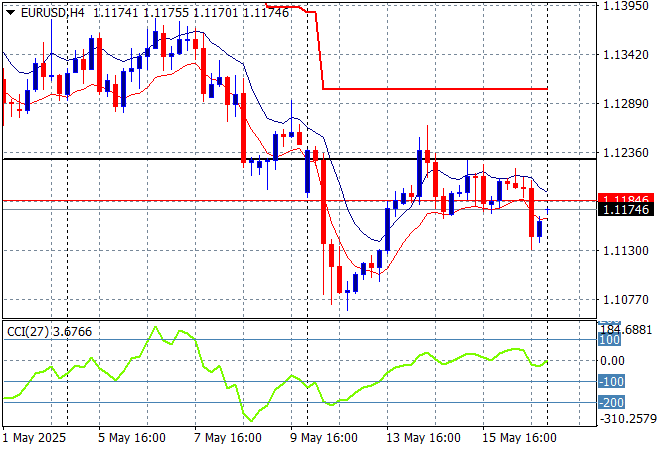
The USDJPY pair retraced all last trading week after getting way ahead of itself at the 149 level, now back down to the 145 handle with the potential to break below in the coming session.
I still contend we need to watch for any sustained break below the 139 level which completes a multi year bearish head and shoulders setup that could see the 110 to 120 level revisited. No trade deal yet!
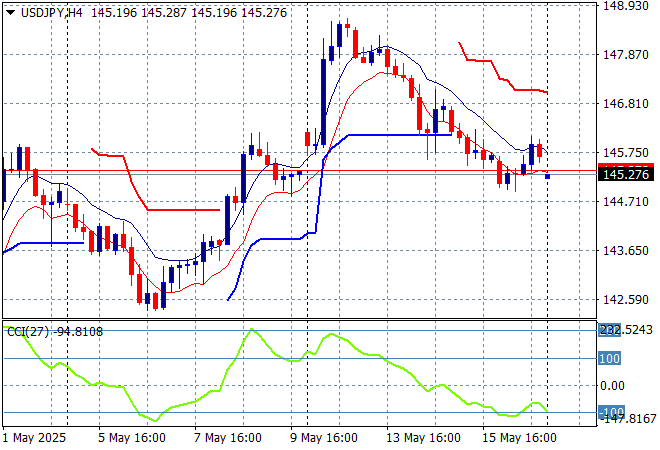
The Australian dollar was previously slowly extending its gains above the 64 cent level to extend above the pre-tariff announcement levels, but has pulled back again below that level in another unsure session on Friday night.
Stepping back for a longer point of view (and looking at the trusty AUDNZD weekly cross) price action has crossed back above the 200 day MA (moving black line) after bouncing off a near new five year low. This is all about the USD, not the Australian economy so I’m wary here but you’ve got to follow price, keeping an eye on temporary support at the 63 cent level:
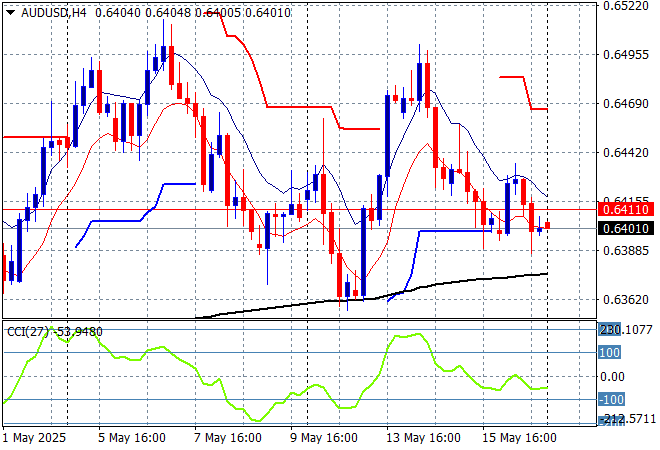
Oil markets are failing to hold onto its post tariff bounce but are facing other geopolitical ructions with Brent crude pushed around the $65USD per barrel level again after recently almost making a new weekly low.
The daily chart pattern shows the post New Year rally that got a little out of hand and now reverting back to the sideways lower action for the latter half of 2024. The potential for a return to the 2024 lows is still building here as domestic demand in the US is likely to continue to decline as the Trump Taxes take effect:
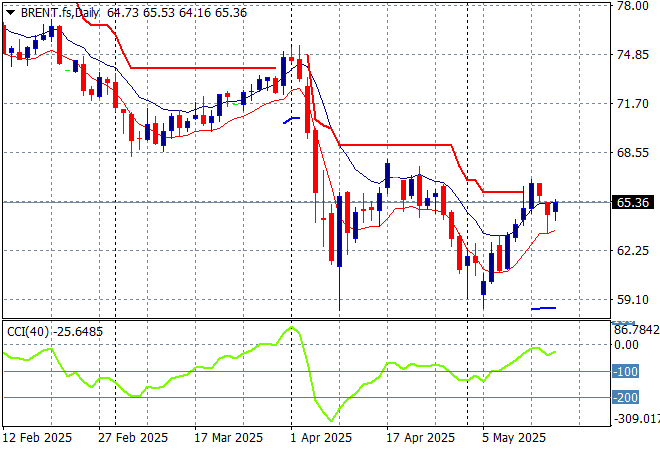
Gold pulled back again on Friday night after sharply moving higher in recent weeks as it got way ahead of itself at least on the short term charts but is now failing to make any effort to get back on track as it slides another $40 lower to breach the $3200USD per ounce level.
Short term support had firmed immensely in recent sessions showing real strength but momentum became considerably overbought so this was inevitable as price action has reverted back to the uptrend line from the April lows. There is further support at the $3200 level that could be tested next on the overshoot:
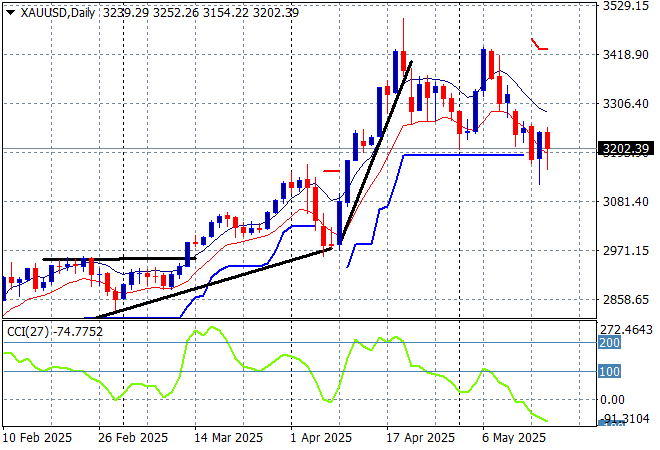
Glossary of Acronyms and Technical Analysis Terms:
ATR: Average True Range – measures the degree of price volatility averaged over a time period
ATR Support/Resistance: a ratcheting mechanism that follows price below/above a trend, that if breached shows above average volatility
CCI: Commodity Channel Index: a momentum reading that calculates current price away from the statistical mean or “typical” price to indicate overbought (far above the mean) or oversold (far below the mean)
Low/High Moving Average: rolling mean of prices in this case, the low and high for the day/hour which creates a band around the actual price movement
FOMC: Federal Open Market Committee, monthly meeting of Federal Reserve regarding monetary policy (setting interest rates)
DOE: US Department of Energy
Uncle Point: or stop loss point, a level at which you’ve clearly been wrong on your position, so cry uncle and get out/wrong on your position, so cry uncle and get out!